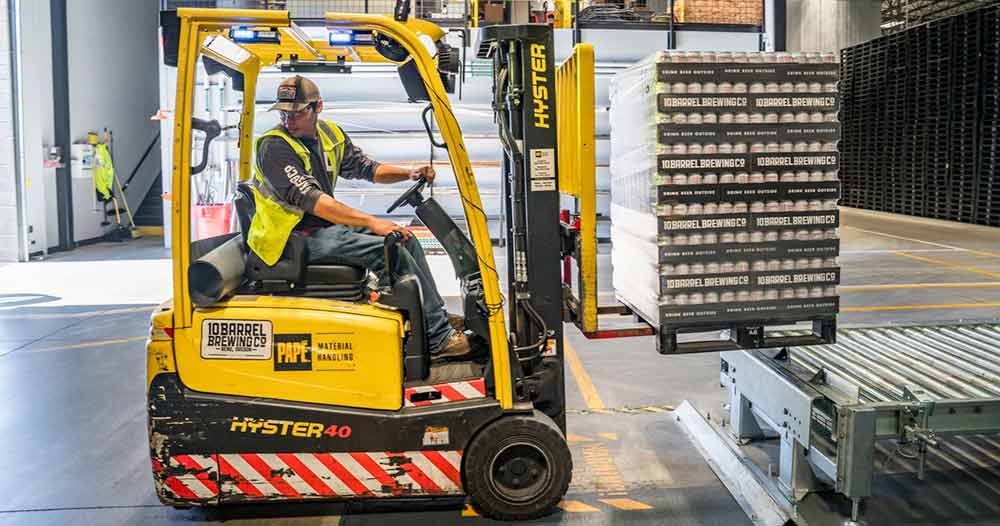Share
Author
George Anderson
Share
Last updated Jul 5, 2022.
In the age of Amazon, every manufacturer must deal with the question of going direct to the consumer (or end user) of their products. While that’s easy to state in the abstract, it gets tricky in real life. Manufacturers developing a direct to consumer model face two major challenges:
- They probably don’t have SKUs for “eaches”
- Their warehouse isn’t set up to ship “eaches.”
Here’s how manufacturers can meet the challenge of “eaches” and solidify their direct-to-consumer model.
The problem: Customers’ needs are growing more and more diverse
Our clients in manufacturing have brought an emerging B2B ecommerce trend to our attention. Their customers need the ability to order different package sizes. Where standard bulk units of measure were once wholly adequate, customers are beginning to request the ability to order smaller quantities.
This trend is happening not only among manufacturers going direct, but also among manufacturers who still sell strictly to distributors and dealers.
In other words, the need for alternative units of measure is emerging in direct-to-consumer markets and in traditional B2B relationships.
However, there are two difficulties which manufacturers typically encounter when they try to adapt to alternative units of measure.
Difficulty 1: SKUs in SAP don’t support “eaches”
Most manufacturers’ SAP systems weren’t set up with the consumer in mind. They were set up (understandably) to run the manufacturer’s supply chain. That means the minimum quantity associated with an SKU is usually a bulk amount—a pallet, case, or some multiple of individual units.
This works fine for manufacturers who sell exclusively to their distribution network. Distributors don’t need to purchase in “eaches”—they’re happy to buy in bulk.
But large minimum quantities won’t work for a direct to consumer model. Other than buying at Costco, consumers generally want to buy “eaches” rather than cases or pallets.
Difficulty 2: The warehouse isn’t set up to ship “eaches”
SAP isn’t the only place where manufacturers encounter difficulty in going direct. Just like their SAP systems, a manufacturers’ warehouses are usually set up to deal with large orders. They’re equipped with forklifts and pallet jacks. They fill commercial trucks at the loading dock.
How can a fulfillment center like this ship an “each” via FedEx or UPS?
This is the second challenge in adapting to eaches: manufacturers must add agility to their bulk order fulfillment centers—the kind of agility that can ship small orders.
What that looks like will depend on scale. We have a manufacturing client who has committed to shipping “eaches.” They’ve cordoned off a corner of the warehouse for open pallets that feed “eaches” orders. Every time an order for a small quantity comes in, a part-time worker literally buys product from the warehouse, unpacks it into eaches, and ships it that way.
Now, that’s fine for 0-10 orders a day, maybe 20 orders a day. But in this scenario, they are literally rekeying every order, running down to the warehouse floor to unpack a carton, hand-delivering it to FedEx, rekeying the FedEx bill into a standalone Magento store—just to pilot a B2C channel. It’s not scalable.
A more scalable solution: Processing “eaches” through Corevist (alternative UoM supported)
For manufacturers who have conversion factors maintained for the products in question, alternative units of measure (“eaches” rather than bulk quantities) are easy to set up in the Corevist Platform. Your Corevist B2B portal store can display the alternative UoM of your choice without any modification to the SKU in SAP.
How easy is this? Simply implement Corevist and tell us to flip the switch on alternative UoM.
Of course, you’ll still have to solve the warehouse logistics problem. But with a solution like Corevist in place, order processing of “eaches” flows seamlessly from the buyer into SAP.
Getting closer to the consumer by offering “eaches”
Once your ecommerce website can offer “eaches,” you’ve conquered one of the biggest problems in going direct to the consumer. Where you once had no visibility into the end user of your products, with a distributor standing between you and that end user, you can now establish a direct relationship. With the website offering “eaches,” you can get closer to the consumer and build your brand at the same time. Offering “eaches” might seem like one small step, but it’s a giant step in bridging that gap.
Want to become Easier To Do Business With?
Check out the Corevist Platform.
Managed B2B portals and eCommerce with prebuilt integration for ECC and S/4HANA.










